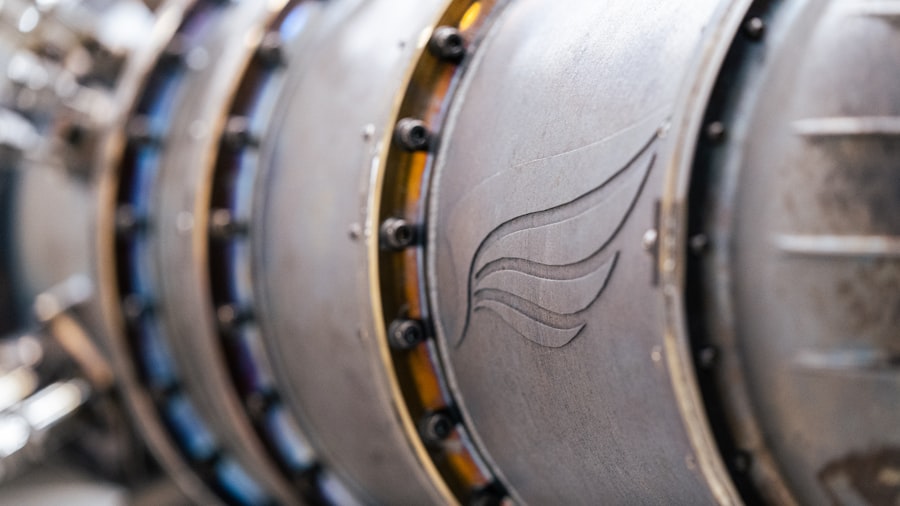Aerospace engineering companies are at the forefront of technological innovation, playing a pivotal role in the design, development, and production of aircraft, spacecraft, satellites, and related systems. These companies operate in a highly specialized field that combines principles of aerodynamics, materials science, structural analysis, propulsion, and avionics. The aerospace sector is not only crucial for national defense and commercial aviation but also for scientific exploration and global connectivity.
Major players in this industry include Boeing, Lockheed Martin, Airbus, and Northrop Grumman, each contributing unique expertise and capabilities to the ever-evolving landscape of aerospace technology. The significance of aerospace engineering companies extends beyond mere manufacturing; they are integral to advancing human capabilities in air and space travel. The industry has seen exponential growth over the past few decades, driven by increasing demand for air travel, satellite communications, and space exploration initiatives.
As global populations expand and economies develop, the need for efficient transportation solutions becomes more pressing. This has led to a surge in investment in aerospace technologies, fostering an environment ripe for innovation and collaboration among various stakeholders, including governments, private enterprises, and research institutions.
Key Takeaways
- Aerospace engineering companies drive innovation in aircraft design, materials, and propulsion systems.
- They play a crucial role in advancing space exploration technologies and missions.
- Cutting-edge technologies enable more efficient, sustainable, and high-performance aerospace solutions.
- Collaboration and partnerships are essential for overcoming industry challenges and fostering growth.
- The future of aerospace engineering involves addressing emerging opportunities and evolving market demands.
Cutting-edge Technologies in Aerospace Engineering
The aerospace engineering sector is characterized by its relentless pursuit of cutting-edge technologies that enhance performance, safety, and efficiency. One of the most significant advancements in recent years is the integration of artificial intelligence (AI) and machine learning into various aspects of aerospace design and operations. These technologies enable engineers to analyze vast amounts of data quickly, optimize flight paths, predict maintenance needs, and improve overall system reliability.
For instance, AI algorithms can process real-time data from aircraft sensors to detect anomalies and suggest corrective actions before they escalate into serious issues. Another transformative technology is the development of advanced avionics systems that enhance navigation and communication capabilities. Modern aircraft are equipped with sophisticated avionics that utilize satellite-based navigation systems like GPS, allowing for more precise flight operations.
Additionally, innovations in cockpit design have led to the implementation of digital displays and automated systems that reduce pilot workload and improve situational awareness. These advancements not only enhance safety but also contribute to fuel efficiency by optimizing flight routes and reducing unnecessary fuel consumption.
The Role of Aerospace Engineering Companies in Space Exploration

Aerospace engineering companies are instrumental in the ongoing quest for space exploration, contributing to missions that expand our understanding of the universe. The collaboration between private companies and governmental space agencies has revolutionized access to space. For example, SpaceX has made headlines with its Falcon 9 rocket, which has successfully delivered payloads to the International Space Station (ISS) and is paving the way for future manned missions to Mars.
This partnership between commercial entities and government organizations exemplifies how aerospace engineering companies are redefining the boundaries of space exploration. Moreover, aerospace engineering firms are involved in developing technologies that support deep space missions. NASA’s Artemis program aims to return humans to the Moon by 2024, with plans for sustainable lunar exploration and eventual missions to Mars.
Companies like Blue Origin and Lockheed Martin are collaborating with NASA to create the Orion spacecraft and other essential components for these ambitious missions. The development of reusable launch systems is another critical area where aerospace engineering companies are making strides, significantly reducing the cost of access to space and enabling more frequent missions.
Advancements in Aircraft Design and Manufacturing
| Advancement | Description | Impact on Aircraft Design | Manufacturing Metric | Year Introduced |
|---|---|---|---|---|
| Composite Materials | Use of carbon fiber reinforced polymers and other composites | Reduced weight, increased fuel efficiency, improved strength | Up to 50% weight reduction compared to aluminum | 1990s |
| 3D Printing (Additive Manufacturing) | Layer-by-layer fabrication of complex parts | Enables complex geometries, reduces waste, shortens lead times | Parts production time reduced by 30-70% | 2010s |
| Fly-by-Wire Systems | Electronic flight control replacing mechanical linkages | Improved handling, safety, and aircraft responsiveness | Reduced pilot workload by 40% | 1980s |
| Advanced Aerodynamics (e.g., Winglets) | Design improvements to reduce drag and improve lift | Fuel savings and extended range | Fuel efficiency improvement of 5-7% | 1990s |
| Digital Twin Technology | Virtual models for simulation and predictive maintenance | Optimizes design and reduces downtime | Maintenance costs reduced by up to 20% | 2010s |
| Automation and Robotics in Manufacturing | Robotic assembly and automated quality control | Increased precision and production speed | Assembly time reduced by 25% | 2000s |
The design and manufacturing processes within aerospace engineering have undergone significant transformations due to advancements in computer-aided design (CAD) software and additive manufacturing techniques. CAD tools allow engineers to create highly detailed models of aircraft components, facilitating simulations that predict performance under various conditions. This capability not only accelerates the design process but also enhances accuracy, leading to safer and more efficient aircraft.
Additive manufacturing, commonly known as 3D printing, has emerged as a game-changer in aircraft production. This technology enables the creation of complex geometries that were previously impossible or prohibitively expensive to manufacture using traditional methods. For instance, GE Aviation has successfully produced fuel nozzles for jet engines using 3D printing techniques, resulting in lighter components with improved performance characteristics.
The ability to produce parts on-demand also reduces waste and inventory costs, making manufacturing processes more sustainable.
Innovations in Materials and Propulsion Systems
The quest for lighter, stronger materials has driven significant innovations in aerospace engineering. Advanced composite materials, such as carbon fiber reinforced polymers (CFRP), are increasingly used in aircraft construction due to their high strength-to-weight ratio. These materials not only reduce overall aircraft weight but also enhance fuel efficiency by allowing for more aerodynamic designs.
Boeing’s 787 Dreamliner is a prime example of this trend; approximately 50% of its airframe is made from composite materials, resulting in substantial fuel savings over its operational lifespan. In parallel with material advancements, propulsion systems have also seen remarkable innovations aimed at improving efficiency and reducing environmental impact. The development of hybrid-electric propulsion systems represents a significant leap forward in this area.
Companies like Airbus are exploring hybrid-electric technologies that combine traditional jet engines with electric motors to reduce fuel consumption and emissions. These systems have the potential to revolutionize regional air travel by providing quieter and more environmentally friendly options for short-haul flights.
The Future of Aerospace Engineering Companies

As we look toward the future, aerospace engineering companies are poised to play a crucial role in addressing some of the most pressing challenges facing humanity. The increasing urgency of climate change has prompted a concerted effort within the industry to develop sustainable aviation solutions. This includes research into alternative fuels such as biofuels and hydrogen-powered aircraft that could significantly reduce greenhouse gas emissions associated with air travel.
Furthermore, the rise of urban air mobility (UAM) presents new opportunities for aerospace engineering firms. The concept of flying taxis or personal air vehicles is gaining traction as cities seek innovative solutions to alleviate traffic congestion. Companies like Joby Aviation and Volocopter are actively developing electric vertical takeoff and landing (eVTOL) aircraft designed for urban environments.
These innovations could transform urban transportation by providing efficient aerial alternatives to traditional ground-based travel.
Collaboration and Partnerships in the Aerospace Industry
Collaboration is a cornerstone of success in the aerospace industry, where complex projects often require expertise from multiple disciplines. Partnerships between aerospace engineering companies, research institutions, and government agencies foster an environment conducive to innovation. For instance, NASA’s Space Technology Mission Directorate collaborates with private companies through its Small Business Innovation Research (SBIR) program to accelerate the development of cutting-edge technologies that can be applied across various aerospace applications.
International collaborations also play a vital role in advancing aerospace engineering initiatives. The European Space Agency (ESA) works closely with various aerospace firms across Europe to develop satellite technologies and conduct joint missions. Such partnerships not only pool resources but also leverage diverse expertise from different regions, enhancing the overall capabilities of the aerospace sector on a global scale.
Challenges and Opportunities for Aerospace Engineering Companies
Despite the promising advancements within the aerospace sector, companies face numerous challenges that require strategic navigation. One significant hurdle is the regulatory landscape governing aviation safety and environmental standards. As new technologies emerge, regulatory bodies must adapt their frameworks to ensure safety while fostering innovation.
Aerospace engineering companies must engage proactively with regulators to shape policies that support technological advancements without compromising safety. Additionally, workforce development poses a challenge as the industry grapples with a skills gap resulting from an aging workforce and rapid technological changes. Companies must invest in training programs and partnerships with educational institutions to cultivate a new generation of engineers equipped with the skills necessary for modern aerospace challenges.
This investment not only addresses immediate workforce needs but also ensures long-term sustainability for the industry. In conclusion, aerospace engineering companies stand at a critical juncture where they can leverage cutting-edge technologies, foster collaborations, and address challenges to shape the future of air and space travel. As they continue to innovate and adapt to changing demands, these companies will play an essential role in advancing human capabilities while addressing global challenges such as climate change and urban congestion.




